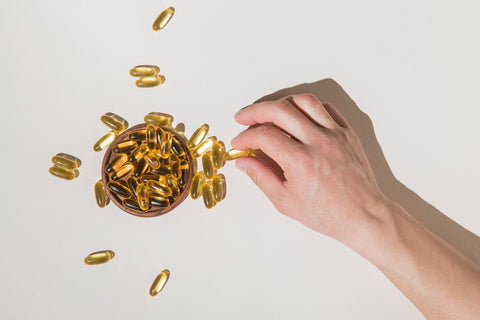Kegel exercises are a series of exercises designed to strengthen the pelvic floor muscles, which are the muscles that support the bladder, uterus, small intestine and rectum.
These exercises are named after Dr. Arnold Kegel, a gynecologist who introduced this technique in the 1940s as a non-surgical method to help women control urinary incontinence and improve pelvic health. Since then, Kegel exercises have become widely recognized for their benefits for both women and men, helping to improve overall pelvic floor health.
Anatomy of the pelvic floor
The pelvic floor is a group of muscles and tissues that form a kind of hammock or support at the base of the pelvis. These muscles play a crucial role in controlling urination, defecation, and sexual function. When these muscles are weakened, problems such as urinary incontinence, fecal incontinence, and sexual problems can arise.
Pelvic floor muscles can become weak due to a variety of factors, including pregnancy, childbirth, menopause, obesity, pelvic surgery, and aging. Kegel exercises are designed to strengthen these muscles, thereby improving pelvic health and function.
How can you identify your pelvic floor muscles?
To do Kegel exercises correctly, it is essential to identify the correct muscles. One of the simplest ways to identify the pelvic floor muscles is to try to stop the flow of urine midstream.
The muscles you use to stop the flow are your pelvic floor muscles. Another way is to squeeze your muscles as if you were trying to stop yourself from passing gas. If you can feel a lifting motion, then you are using the right muscles.
Important note: It is not recommended to do Kegel exercises while you are urinating regularly, as this can cause bladder problems such as incomplete emptying.
How should you perform Kegel exercises?
Once you have identified your pelvic floor muscles, you can start doing Kegel exercises by following these steps:
Find a comfortable place: You can do the exercises sitting, lying down or standing. Choose the position that is most comfortable for you.
Contract your pelvic floor muscles : Imagine that you are trying to hold in, urinate, or stop passing gas. Make sure you are not contracting any other muscles, such as those in your abdomen, buttocks, or thighs.
Hold the contraction: Hold the muscles contracted for 3 to 5 seconds.
Relax: Relax the muscles completely for the same amount of time that you have been holding them contracted.
Repeat: Perform 10 to 15 reps per session, and try to do at least 3 sessions per day.
Benefits of Kegel exercises
Kegel exercises offer a wide range of health benefits . Key benefits include:
1. Improvement in urinary incontinence
Urinary incontinence is a common condition , especially in women after childbirth or during menopause. Strengthening the pelvic floor muscles through Kegel exercises can help improve bladder control, thereby reducing the incidence of involuntary urine leakage.
2. Helps with fecal incontinence
As with urinary incontinence, fecal incontinence can also be improved with Kegel exercises. By strengthening the pelvic muscles, control over the sphincters is improved, which can prevent involuntary loss of stool.
3. Improved sexual function
Kegel exercises can also improve sexual function. In women, they can increase vaginal sensitivity, improve muscle control, and promote more intense orgasms. In men, they can help improve erection and control over ejaculation, contributing to a better quality of sexual life.
4. Postpartum strengthening
After childbirth, the pelvic floor muscles may be weakened. Kegel exercises are especially helpful for women in the postpartum period, helping to speed up recovery, reduce incontinence and improve overall pelvic health.
5. Reduction of the risk of prolapse
Prolapse is a condition in which pelvic organs, such as the bladder, uterus, or rectum, drop down into the vagina due to a weak pelvic floor. Strengthening these muscles with Kegel exercises can help prevent or relieve symptoms of a mild prolapse.
When should Kegel exercises be done?
Kegel exercises can be performed anytime, anywhere, as they are discreet and do not require special equipment. However, it is recommended to do them when:
You are at rest and feel relaxed.
After urinating.
Before getting out of bed in the morning or at night.
Common mistakes when doing Kegel exercises
Although Kegel exercises are simple, there are some common mistakes that can reduce their effectiveness:
Using the wrong muscles : Some people tend to contract the muscles in their abdomen, buttocks or thighs instead of their pelvic floor muscles. This not only reduces the effectiveness of the exercise, but can also cause unnecessary strain on other areas of the body.
Overdoing exercises: Like any other muscle, your pelvic floor muscles need time to recover. Performing too many repetitions or holding contractions for too long can lead to muscle fatigue.
Not relaxing properly : It is essential to relax completely between each contraction. Maintaining constant tension can lead to fatigue and muscle pain.
Improvement in pelvic floor strength is not immediate. It can usually take 4-6 weeks of consistent practice to notice a significant difference. For some people, it can take up to 3 months of regular exercise to see improvements in incontinence or sexual function.
Who should do Kegel exercises?
Kegel exercises are beneficial for a wide variety of people, including:
Pregnant women: They can help prepare the body for childbirth and prevent postpartum incontinence.
Women after childbirth: Helps the recovery of weakened pelvic muscles.
Menopausal women: They can help combat the effects of aging on pelvic health.
Men with urinary incontinence: Strengthening the pelvic floor muscles can help control the bladder.
Men with erectile dysfunction: May improve sexual function and quality of erections.
Additional Tips
Kegel exercises are a simple and effective way to improve pelvic floor health. They require no special equipment, can be done anywhere, and are beneficial for people of all ages and genders.
If you experience pain or difficulty performing Kegel exercises, consult a health care professional, such as a physical therapist specializing in pelvic health, for more information.
At Madequa you will find multiple tips and resources to take care of your health at each stage of menopause: before, during and after. We focus on offering solutions and recommendations that help you feel strong, in control of your body and improve your overall well-being. Discover how to take care of your pelvic floor and much more with the support of women's health professionals.
References
Kegel AH. Progressive resistance exercise in the functional restoration of the perineal muscles. Ann West Med Surg. 1948; 2(5):524-526.
Bo K, Berghmans B, Morkved S, Van Kampen M. Evidence-Based Physical Therapy for the Pelvic Floor. Elsevier Health Sciences; 2007.
Dumoulin C, Cacciari LP, Hay-Smith EJC. Pelvic floor muscle training versus no treatment, or inactive control treatments, for urinary incontinence in women: A short version Cochrane systematic review with meta-analysis. Neurourol Urodyn. 2018;37(1):225-232.
National Institute of Diabetes and Digestive and Kidney Diseases (NIDDK). “Urinary Incontinence in Women.” 2021.
Harvard Health Publishing. “Kegel exercises: A how-to guide for women.” Harvard Medical School, 2020.




Comments (0)
There are no comments for this article. Be the first one to leave a message!